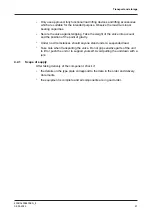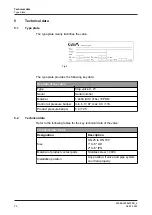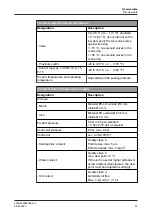
9
Cleaning
9.1
Cleaning
All parts in contact with product must be cleaned at regular intervals. Always
observe the safety data sheets issued by the cleaning agent manufacturers. Only
use cleaning agents which do not cause damage to the seals and the inner parts
of the valve. When the pipe is cleaned, the cleaning medium also flows through
and cleans the valve housings.
With respect to the cleaning method and parameters like detergents,
temperatures, times, and intervals, the component manufacturer can merely
make recommendations but cannot provide any generally applicable details.
Method and parameters should be determined and defined by the operator in
accordance with the relevant process and product.
The cleaning effect must be checked regularly by the operator!
9.1.1
Cleaning Process Examples
Typical Cleaning Parameters in Dairy Operations
Example of a two-phase cleaning process:
•
Sodium hydroxide solution and sodium hydroxide based combination
products in concentrations from 0.5% to 2.5% at 75 °C (167 °F) to 80 °C (176
°F).
•
Phosphoric or nitric acid, and combination products based thereon in the
concentrations of 0.3 to 1.5% at approx. 65 °C (149 °F).
Example of a cleaning operation in one cleaning step:
•
Formic acid and formic acid-based combination products at up to 85 °C (185
°F).
Typical Cleaning Parameters in Breweries
•
Sodium hydroxide solution and sodium hydroxide based combination
products in concentrations of 1% to 4% at about 85 °C (185 °F).
•
Phosphoric or nitric acid, and combination products based thereon in the
concentrations of 0.3 to 1.5% at 20 °C (68 °F).
9.1.2
Cleaning effect
The cleaning effect depends on the following factors:
•
Temperature
•
Time
•
Mechanics
•
Chemicals
•
Degree of soiling
Cleaning
Cleaning
430BAL008430EN_4
34
08.03.2022
















































